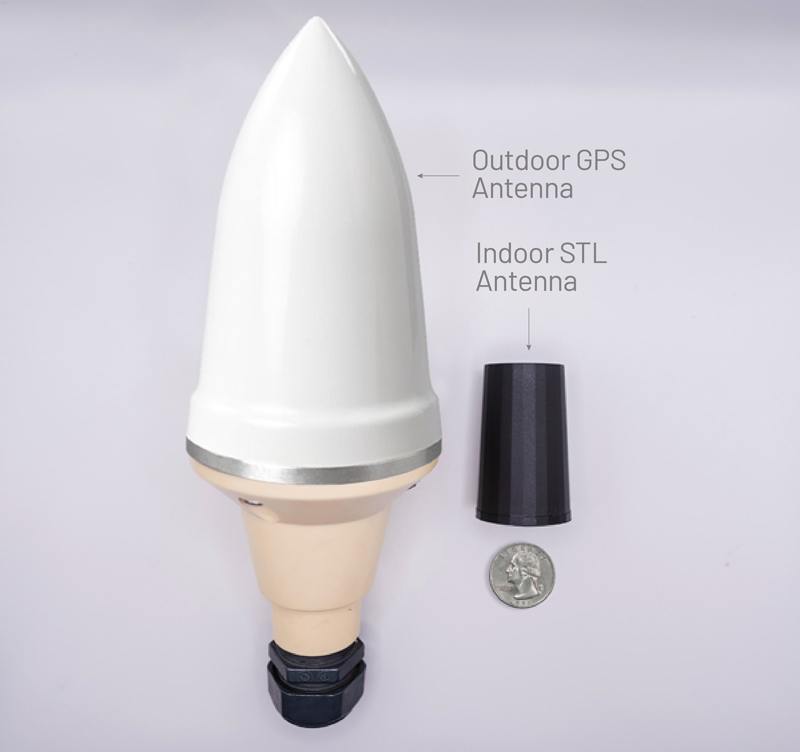

Unlike GPS, which is difficult to receive in environments where its signal is obstructed or degraded, STL works exceptionally well indoors. This means that PNT-dependent systems and applications needing positioning, navigation, and timing (PNT) information can rely on STL no matter where they are located — indoors and out.
Small Antenna, Accurate Timing
A small indoor antenna only 2.5″ (63 mm) tall receives timing signals that penetrate most structures, including buildings with low-emissivity (Low-E) windows or metal and concrete siding and roofing. This means that in-building wireless installations that leverage STL can maintain synchronous timing without the need for an outdoor GNSS antenna.

Low Cost, Reduced Risk
STL is easy to deploy and connect in areas where GPS and GNSS doesn’t work reliably, saving time and money. Having a signal that passes through structures is especially important for buildings where it is challenging to secure roof rights, obtain landlord permissions, comply with local zoning restrictions, and contend with the associated interruptions and scheduling risks that often delay 5G deployments. An indoor antenna solution for assured PNT lowers cost and reduces the risks of installation and maintenance.

What STL’s Indoor Availability Means for 5G
The majority of 5G sites are indoors where GNSS is challenged: small cells (indoors and outdoors), femtocells (enterprise and residential broadband), and picocells serving malls, hospitals, hotels, large venues, and high-rise office buildings.
STL can provide timing synchronization with an indoor antenna in environments where distributed PTP is deployed but unable to provide the accuracy that 5G requires. This is essential when outdoor GNSS antennas are impractical to install or not permitted.
Carriers can also use STL to provide timing to a PTP edge grandmaster clock to enable 5G to work indoors. Satelles also offers standalone receivers that connect to a wireless operator’s RAN gear or router. These STL receivers can replace or augment GNSS and provide timing sync wherever and whenever GNSS is unavailable.

Another Reason Why STL Works Great Indoors
STL’s broadcast bursts put out roughly 1,000 watts (1 kW) of effective isotropic radiated power (EIRP). This EIRP level is the amount of electrical power needed for an omnidirectional antenna to get the equivalent power level seen in a single directional beam.
When an STL burst hits the ground, an area roughly the size of Texas sees the equivalent of 1,000 watts of power from the satellite concentrated into that burst. By comparison, GPS puts only about 50 watts into a beam that is spread across a massive area equal to one-third of the entire Earth.
Satelles’ special signal coding effectively multiplies that 1,000 watts of EIRP by a factor of 25. This means that STL has the equivalent of 25,000 watts (25 kW) on each data bit in its signal.